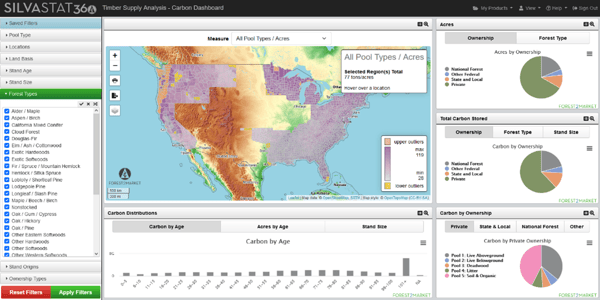The paper and packaging industry has made considerable progress and contributions in redirecting the growth of the industry towards a more sustainable future as ESG (Environmental, Social, and Governance) issues have forged a way to the top of consumers’ and companies’ priorities. However, the P&P industry’s sustainability journey doesn’t simply start and end all within its individual end-product sectors. It expands to transportation, where we are getting the raw materials and machinery needed to produce grades from, and most importantly, to our forests – the industry’s sustainability roots.
Without proper management, forests become overstocked and subject to pest and disease invasions that can quickly convert once-healthy timber stands into millions of acres of dead and decaying trees. Due to harvesting restrictions in the US West, this buildup of dead trees has become dangerous fuel for megafires, which release carbon emissions that affect everything from regional forests to the global climate, and drive climate change-related events that then contribute to even more wildfires.
Scientists are warning that we must cut tree densities to sustainable levels to allow forests to become more fire resilient. Commercial thinning and logging are tools that help sustainably accomplish this work while improving forest health and providing the wood-based products that keep the P&P industry running—clearly a “win-win” for our industry and the environment.
Many paper companies are already committed to local landowners and forests that provide a natural, renewable and non-fossil-fuel resource that can live many lives through a widely available recycling infrastructure. We’re seeing many paper companies work hand in hand with mostly private landowners, both individuals and families, to grow trees faster than they are being harvested. And increasingly, forests are being certified by independent organizations that ensure things like soil, water and wildlife are considered in standard management practices.
While we know paper plays a major role in resolving global plastic pollution issues, we must remain mindful of our natural resources and the interconnected web of multiple industries that play a vital role in the production of pulp and paper. There remains a large gap between our aspirations and reality – and closing that gap is going to take advocacy, research and effective tools companies can use to accurately measure their environmental impacts.
Forest2Market realizes how important it is for stakeholders across the global forest value chain to have access to the reliable and precise carbon-related datasets that impact them the most. While each forested region in the US is unique, the goal is to arrive at a balanced growth-to-removal relationship where the forest resources are being sustainably utilized for blended outcomes. This has historically been a difficult story to relay to a skeptical public, but we can now illustrate the positive impacts the forest value chain has with precise carbon-related data and visual analytics.
The Carbon Analysis 360 tool was specifically designed with two important goals in mind:
- To bring a new level of transparency to an increasingly important environmental metric that is redefining global policy, capital markets, and corporate reporting.
- To help participants across the forest value chain better understand the important ways in which they can impact climate concerns, inform decision-making, and identify new opportunities in developing markets.

Participants in the P&P industry need to be vigilant about sustainability issues emerging from all directions, including carbon emissions and climate change challenges that impact both the P&P industry and the larger forest products industry. As consumers are increasingly seeking out companies who understand the alignment between personal value systems and purchases – especially with the backdrop of younger generations who represent the first cohorts with considerable purchasing power in history to make decisions based on environmental factors – pulp, paper and wood products manufacturers need to start asking questions such as:
- What does forest carbon storage look like across our entire mill system and in each procurement zones?
- Can we identify new opportunities to work with carbon-conscious wood suppliers in these basins?
- Can we provide demonstrable carbon-related data to our customers that helps secure long-term contracts?
As carbon impacts begin to shape the future of business and policy, Forest2Market and Fisher International are proud to offer our exciting tools to participants across the forest and pulp and paper value chains and beyond. By utilizing both platforms, you can have access to reliable data and information on the carbon footprint of your entire business line from cradle to destination – ensuring that your environmental goals are being fulfilled on all levels. For more information, contact us today or download the white paper below.










